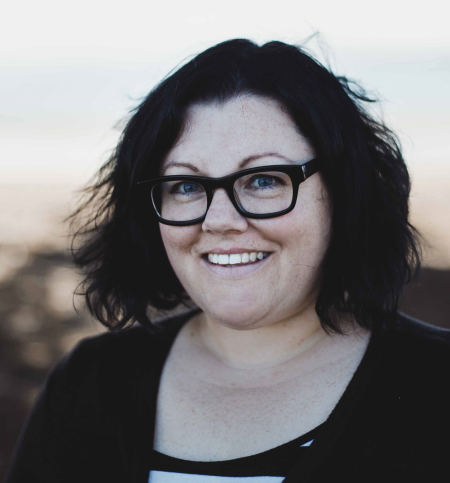 CHAA_TEE/SHUTTERSTOCK
CHAA_TEE/SHUTTERSTOCK
The recent wildfires in California have been relentless reminders of these extraordinary times. Working for a nonprofit supporting camps and out-of-school time youth programs, my days have been filled lately with tracking hundreds of fires threatening the beloved summer camps tucked away in the burning forests while living among the abnormally orange-colored skies.
One fire, in particular, the El Dorado fire, especially caught my attention as it was sparked by a gender reveal gone terribly wrong. I always believed that this new gender reveal phenomenon was dangerous and harmful. They perpetuate flawed notions of gender even before birth, but that danger has never been more evident than right now.
Gender is incredibly misunderstood. In my former travels across the country training youth-serving professionals on gender, each room promptly filled with questions packed with ideologies, misinformation and confusion between gender (how you identify), biological sex (physical anatomy) and sexuality (who you love). These misunderstandings often prevent folks from grasping the risks associated with not providing safe and gender-affirming spaces for youth.
While gender is complex and studies of this area are evolving, there are some simple steps folks can take to build their gender competency, create inclusive spaces and be more culturally responsive in their approach.
Building your gender competency
To build our understanding of gender, we can often start by dismantling some of the misconceptions. The biggest of those ideas is that gender is not fixed, nor is it binary. Ideas about gender are taught beginning at birth and even the gender reveals that are celebrated are proof of the impact we place on these identities.
If our lens of gender is limited to believing that gender and biological sex are the same, we miss all the other features that define gender. Gender identities don’t always align with biological sex, the expression of gender may develop over time and there is a continuum of possibilities that are personal to each individual.
Take a moment to observe gender constructs around you. Question where and how fixed and binary gender is enforced in your camps, schools and other youth programs. Seek answers to the concepts you don’t understand. Read articles and participate in learning events to develop your knowledge. As our social conscience improves around areas of race and culture, remember that gender should be a part of your assessment too.
Creating inclusive spaces
Youth-serving professionals can appreciate the call to action to create inclusive spaces where kindness reigns over bullying, anti-bias and anti-discrimination are taught, intersectional identities are celebrated and adults have the tools to affirm the gender of others in their community. A thoughtful example you may see in practice is the wider use of adding pronoun options on forms, including them in introductions and even printed on nametags. These are visible and affirming ways that demonstrate the value and recognition of an individual’s gender identity.

Tori Barnes
In my travels, I find myself in unfamiliar cities and states frequently. It doesn’t take long as I walk through the airport before I start searching for signs and things that make me feel safe in this new place — something I can connect too, never feel too far from home and show me I can be my authentic self. It may be something as small as a poster or a sticker that match my ideologies, the smell of familiar food, or two people of the same sex holding hands. You can bet that youth, their families and even your colleagues are looking for these same symbols in your camps and schools to connect to as well.
Look around your space to determine how you are welcoming someone who doesn’t fit in the gender binary. Consider the exclusions that may happen in your program. Do you divide groups between boys and girls? Can you switch to other groupings instead?
Are choice activities presented in a way that reinforces gender stereotypes? Are the books you’re reading, songs you’re singing and games you’re playing representative of the wide range of the gender continuum? The Human Rights Campaign Welcoming Schools training offers rich content on creating anti-bias gender-inclusive spaces for youth-serving programs. If you haven’t checked it out yet, run, don’t walk!
Culturally responsive approach
The social conscience of this country is heightened right now and the demand for a culturally responsive approach to teaching and engagement can no longer be overlooked. Doing the tough work of accepting and exploring one’s biases and privilege is an essential step in working toward integrating a culturally responsive approach in your classroom or youth program. Numerous strategies can be employed based on your comfort level and grasp of knowledge on the topic.
Let’s talk for a moment about cisgender privilege. If your gender identity and gender expression match your biological sex, then you are cisgender. If you never had to doubt your safety when choosing a bathroom, that is cisgender privilege. If you never worried about being questioned or insulted about your ID matching your name or gender presentation, that is cisgender privilege. Without checking your biases and acknowledging your privilege, you cannot effectively do the work of being culturally responsive.
“Examine your own assumptions and biases,” says Becky Corr, president of EdSpark Consulting. “This is a very important part of the process. It uncovers areas of growth and opens opportunities to engage in culturally responsive teaching.” Other strategies Becky recommends are to be open to new approaches and get to know your youth and their families.
Knowing how your students, youth, families and communities will react to integrating nonfixed ideas and concepts of gender is imperative in creating a successful inclusive environment. It requires the building of trust, understanding the culture, developing and growing your gender IQ and always remembering the audacious power you have to make someone feel seen and affirmed.
As the skies slowly turn from orange to light shades of blue and the air becomes more clear to breathe, we are hopeful that these fires will soon come to an end. While new growth in our majestic forests has begun, with any luck new ideas of gender will also rise from the ashes of the fire. I do hope that revival of the gender reveal traditions that burn through this country remain a lost relic of the recent wildfires.
Tori Barnes has a B.A. in women and gender studies and 25 years of experience in nonprofit and youth-serving programming with focused work on leadership development, risk and crisis management, gender and LGBTQ issues. She currently works for the American Camp Association and volunteers as an advisor to Camp Brave Trails.































